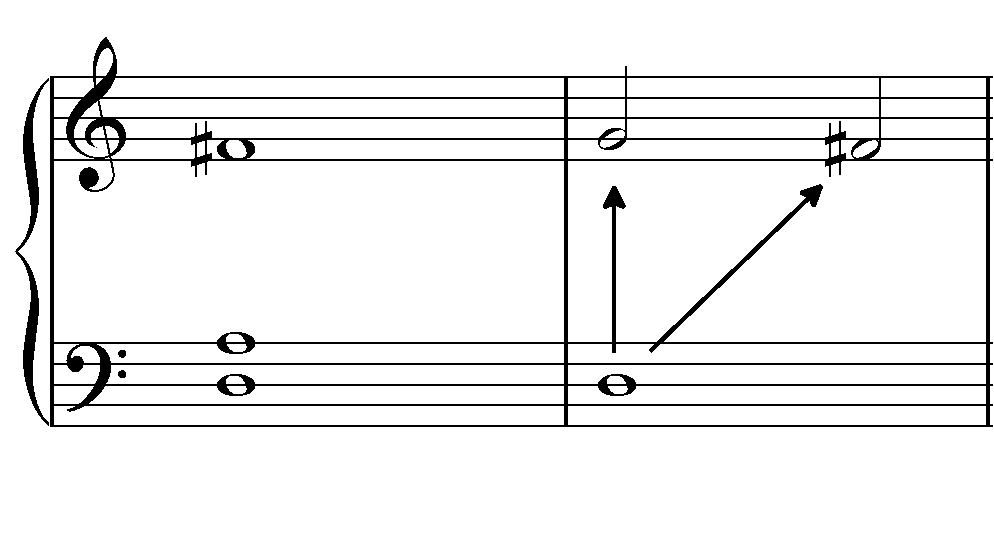B4 | Non-harmonic notes
- Notes that do not belong directly to the chords are called non-harmonic notes
- They are a means of developing a composition by:
- Embellishing melodies
- Intensifying harmony
- Enriching expression
Notes that are added between the principal notes of a melody are called passing notes: accented passing notes if they are on the beat and unaccented passing notes if they’re off the beat.
The following piece is by Shubert – Marche Militarie – with the accented passing notes marked with a cross (+) and the unaccented ones marked with a dash (‘).
Fig. 1

These are the notes that Schubert might have composed without passing notes.

Consider another example, this time by Rössler-Rosetti. Here is the opening of his Sonata for Harp. The melody comprises accented and unaccented passing notes.
Fig. 2
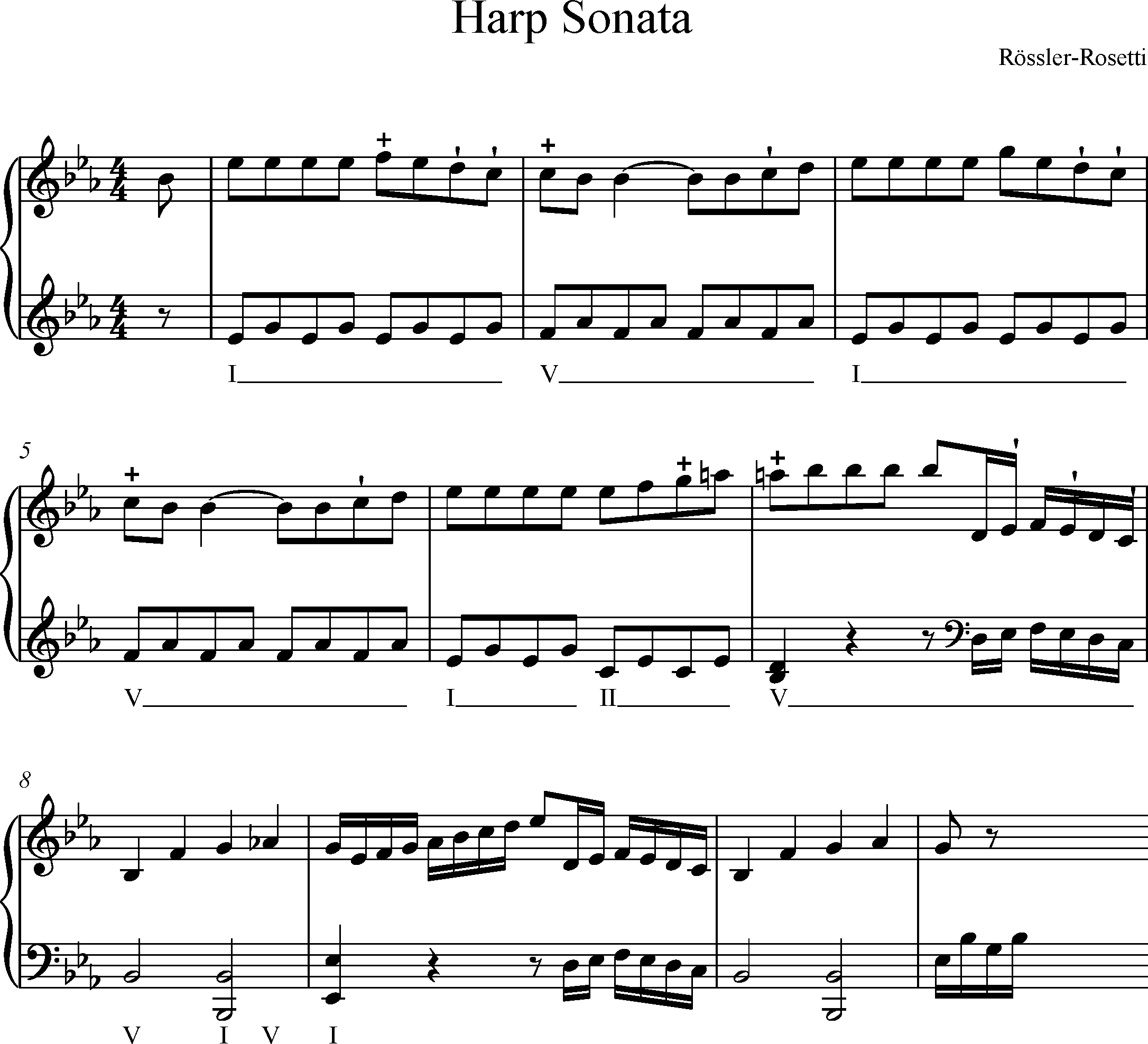
Had the composer chosen not to include passing notes, would the melody be more or less effective in your opinion?
Figure 3 is a hypothetical example of how the melody could have sounded if it only had harmonic notes.
Fig. 3
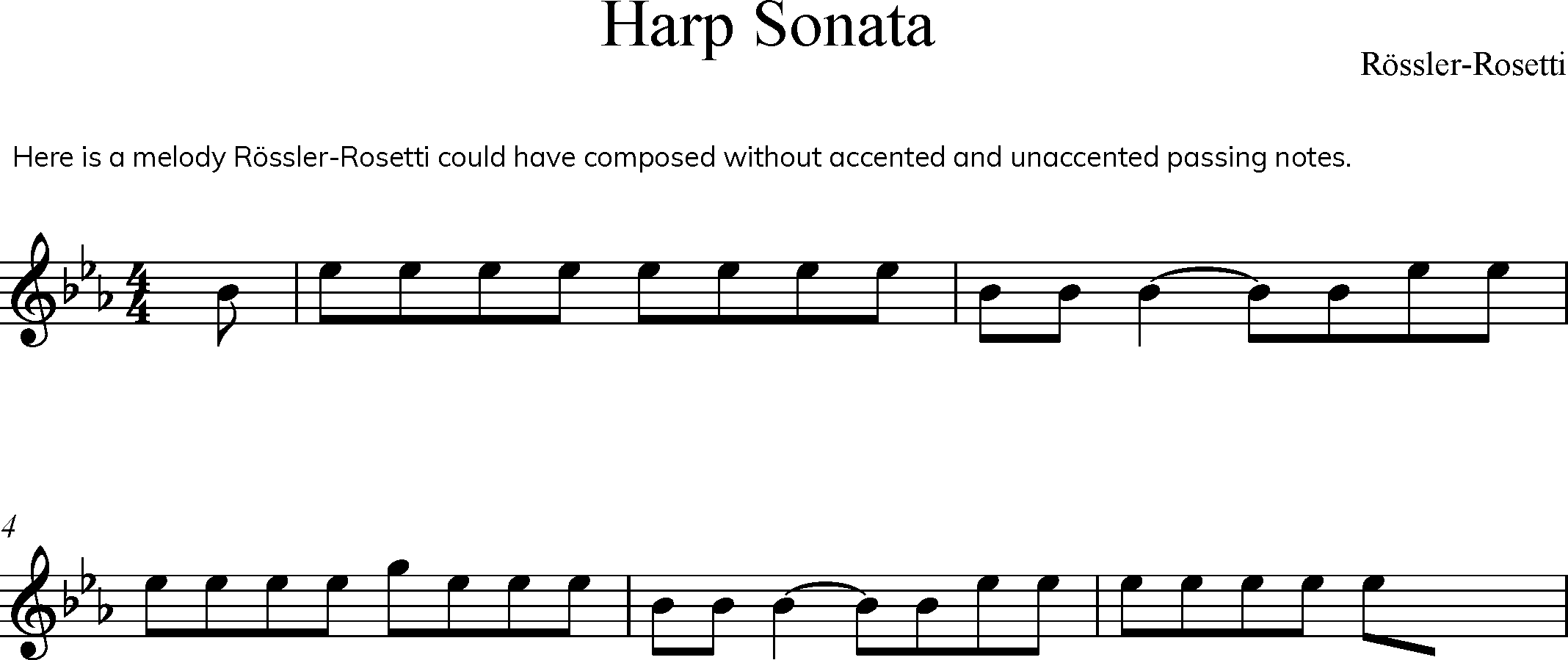
In fact, it sounds more like the bass notes of the harmony, that is the tonic (E♭) and the dominant (B♭), and is therefore less melodic and mellifluous.
Another example of a non-harmonic note is the note of anticipation. It often happens at the end of a phrase and in preparation of the final note of the melody. Here is the cantabile section from Telemann’s Fantasia in G minor. Notice the note of anticipation of the tonic against the chord of the dominant.
Fig. 4
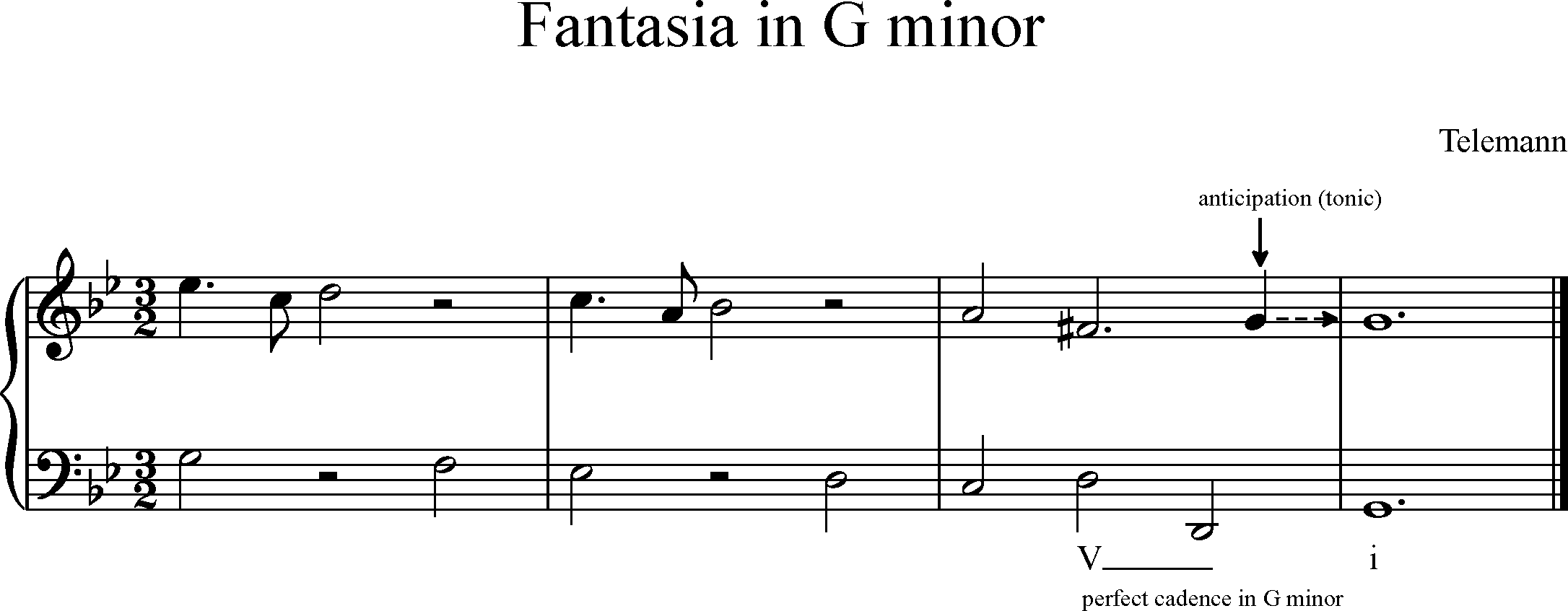
In the song Who Is Sylvia, the composer intensifies the rhythmical accent on the word “Syl-via” with an appogiatura (which comes from the Italian, to lean). The note A in bar 2 leans on the chord of the dominant (V = E) before resolving the middle note of that chord (G#).
Fig. 5
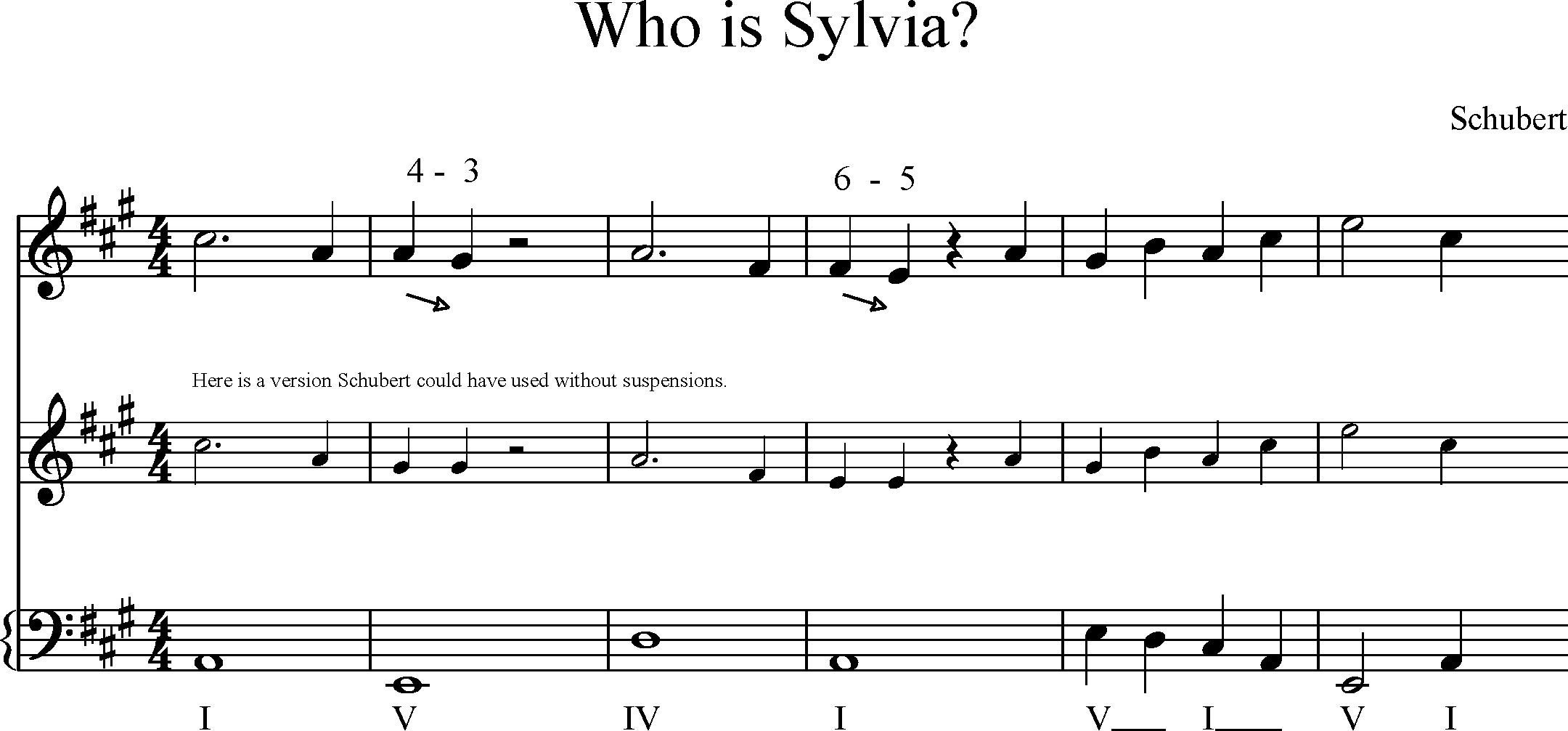
The upper line shows the line that Mozart composed, while the second line alludes to what the composer could have created without the échappé notes. The movement is in C major but the example belongs to the bridge which leads to the second subject in the new tonic of G major.
Notice also that the rhythm and inclination of the melody rhyme – show the same features – between bars 2 and 4 in the example. Unity within melodies is a feature which you have studied in previous units, i.e. that an effective line in music develops by means of rhythm and melodic inclination/shape.
- Another feature used by composers to embellish melodies is the echappé note. These notes may be described as notes that escape from the general direction of the melody.
Notice how the accidentals D# and G# adorn the melody while the F# reinforces the new key.
Fig. 6
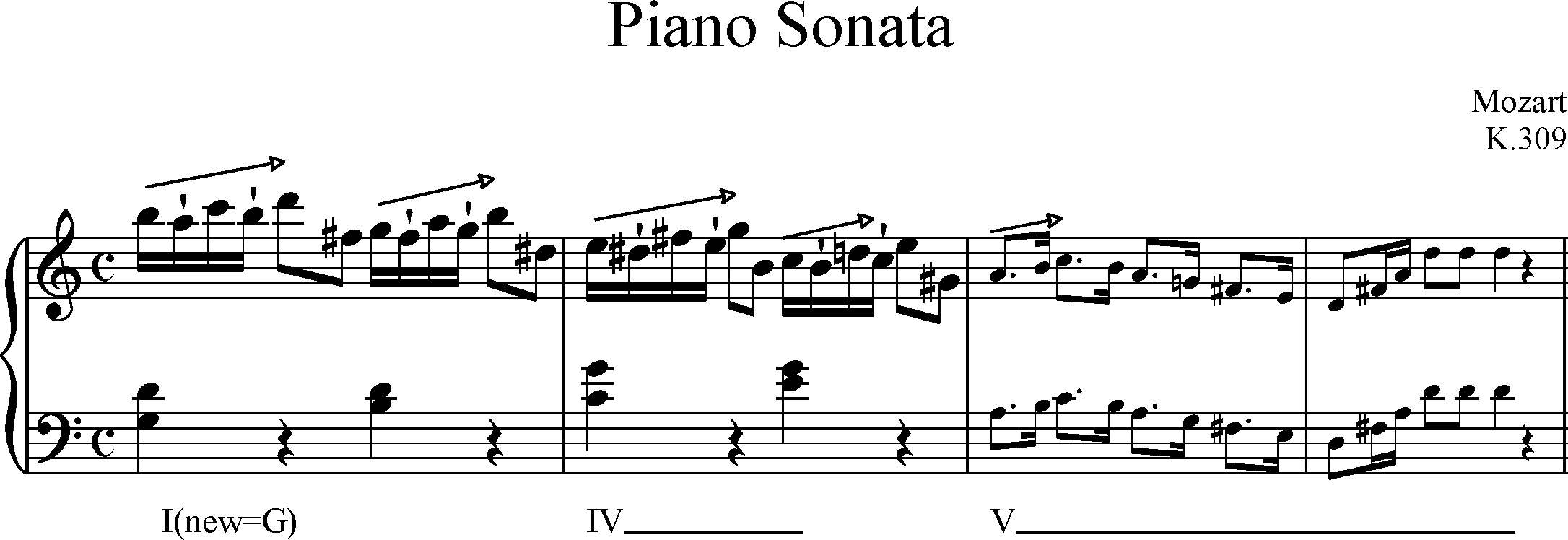
Here is a hypothetical example of the line which Mozart could have written without the échappé notes.

If we consider the structure of the new melody, the above line is a foretaste of the second subject which is seen in the quotation below:
Fig. 7
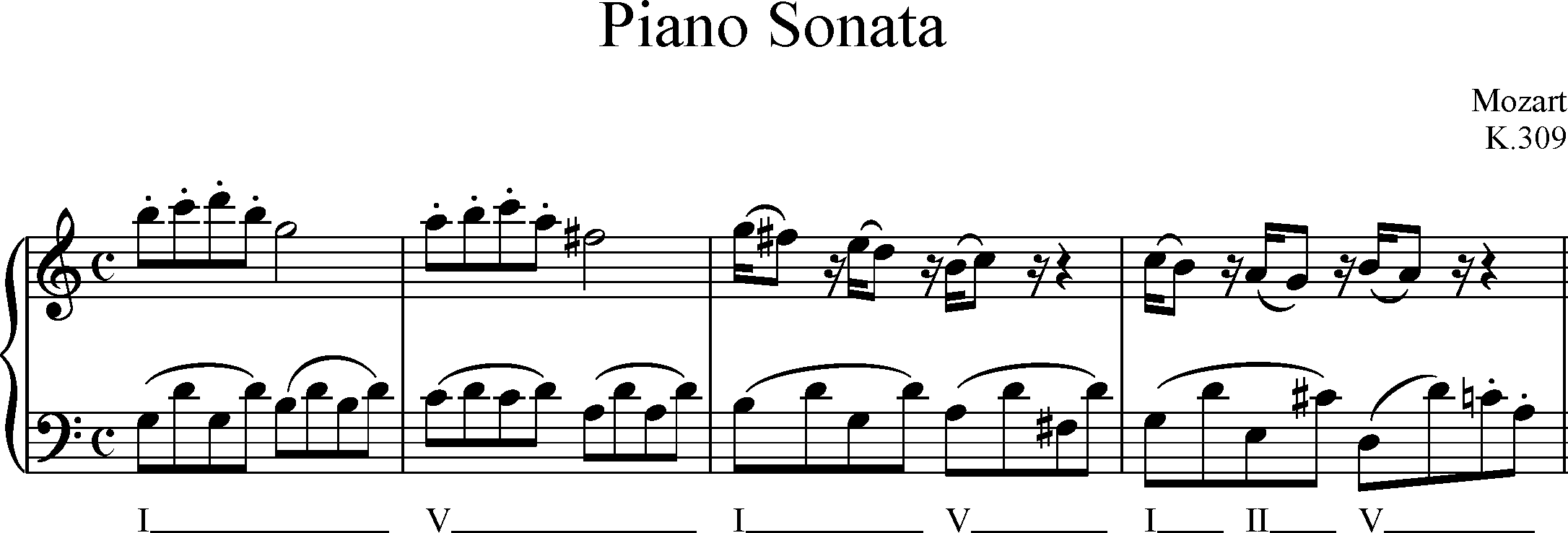
A suspension is another feature in a melody. Suspension means that the rhythm of notes are stretched to clash with a chord. It is affected in 3 steps:
- Preparation
- Dissonance
- Resolution
Look at the following adaptation from Handel’s Largo.
Fig. 8
Largo
Handel
harmony note
dissonance
resolution

Chord V second inversion [the root note is D]
dissonant note

The figure below shows the suspension more clearly.
The intervals in a suspension are counted from the root of the chord; therefore, the name given to this suspension is 4 – 3 because the suspension drops from the 4th note (G) to the 3rd (F#) to form a D major chord. The first suspension (bar 2) in Handel’s piece happens over the note A in the bass but remember that it’s a D chord so the suspension is described as 4 – 3.
Creating suspensions on other notes in chords:
The 4-3 suspension is the most common but look at the examples below where there are others. In the hymn-tune Deganwy there is a 9 – 8 suspension.
Fig. 10

In the hymn-tune Rhondda there are two suspensions happening at the same time (a double suspension) with the soprano singing 4 – 3 (D♭ against A♭ in the bass) and the alto singing 9 – 8 (B♭ against A♭ in the bass).
Looking back at the harmonic notes discussed in COMPONENT 3, notice that it’s a harmonic interval of the 3rd happening in the upper voices; a consonant interval.
Exercises
Composition task
Formulate feminine cadences on the piano, guitar or harp.

